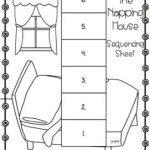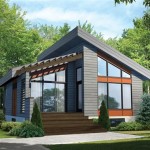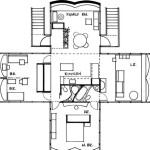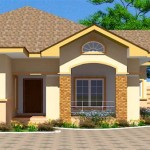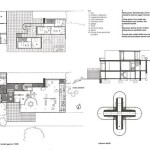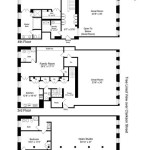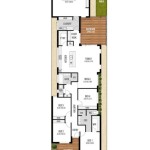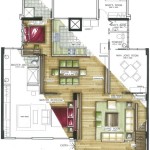House Garage Plans 2 Car: Designing Your Ideal Space
A two-car garage is a standard feature in many modern homes, offering valuable storage and workspace. Whether you're building a new house or planning a renovation, carefully considering your garage plan is crucial. This guide will explore key aspects of designing house garage plans for two cars, empowering you to create a space that meets your specific needs and preferences.
1. Garage Size and Dimensions
The ideal garage size for two cars depends on the size of your vehicles, the intended use of the space, and your available plot. A typical two-car garage measures approximately 20 feet wide by 24 feet deep, providing ample room for parking and maneuvering. However, you may need to adjust these dimensions:
- Vehicle Size: Consider the length, width, and height of your cars, leaving enough clearance for doors to open fully and for comfortable passage.
- Storage Needs: If you need more storage, consider increasing the depth of the garage to accommodate shelves, cabinets, or a workshop area.
- Workshop Space: If you plan to use the garage for hobbies or repairs, allocate additional space for tools, equipment, and a workbench.
When planning garage dimensions, consult local building codes and regulations. They may specify minimum requirements for garage size, door width, and other elements.
2. Garage Door Options
Garage doors are a significant visual and functional aspect of your home. Choosing the right door type is essential for security, aesthetics, and functionality. Consider these options:
- Sectional Garage Doors: These doors are made of multiple sections that move vertically, offering space-saving advantages and easy operation. Sectional doors are also generally more affordable than other types.
- Roll-up Garage Doors: Roll-up doors consist of a single sheet that rolls up to the ceiling. They are a good choice for narrow spaces, but they can be more expensive and may require more maintenance.
- Tilt-up Garage Doors: Tilt-up doors are hinged at the top and tilt upward when they open. They are typically the most affordable option, but they may require a wider opening.
When choosing a garage door, consider factors like insulation, noise reduction, and security features. You can personalize your doors with design elements such as windows, colors, and hardware finishes. Consult with a garage door specialist to discuss your specific needs and budget.
3. Garage Layout and Functionality
A well-planned garage layout enhances functionality and maximizes your space. Here are key considerations:
- Parking Area: Ensure enough space between cars for easy access and maneuverability, especially if you have large vehicles or frequently park with a trailer.
- Storage: Designate dedicated areas for storage, considering your needs. Shelves, cabinets, tool organizers, and overhead storage solutions can effectively maximize vertical space.
- Workshop Space: If you plan to use the garage as a workshop, allocate space for a workbench, tool panel, and storage for your equipment.
- Utility Area: Include a dedicated area for utilities, such as a water heater, HVAC system, or electrical panel.
- Lighting and Ventilation: Adequate lighting is essential for safety and functionality. Natural light is desirable if possible, and consider adding skylights to maintain a bright atmosphere. Ensure proper ventilation for fumes, odors, and air quality.
Think about your workflows and daily activities in the garage and design a layout that supports them smoothly. For example, consider placing a workbench near the entrance for convenient access to tools.
4. Garage Flooring Options
A durable and easy-to-clean floor is essential for any garage. Consider these popular options:
- Concrete Flooring: Concrete is a cost-effective and durable choice. It can be stained or painted to enhance its appearance.
- Epoxy Flooring: Epoxy coatings are durable and offer a smooth and easy-to-clean surface. They come in various colors and can be customized with decorative flakes.
- Tile Flooring: Ceramic or porcelain tiles provide a durable and aesthetically pleasing option. They are stain-resistant and easy to clean.
- Rubber Mats or Tiles: These are a cost-effective and comfortable option for high-traffic areas. They offer shock absorption and sound reduction.
Choose a flooring option that suits your budget, desired look, and intended use of the garage. Consider factors like durability, resistance to stains and chemicals, and ease of maintenance.

House Plan With 2 Car Garage

Traditional Style With 2 Bed Bath Car Garage Bedroom House Plans Family

House Plan With 2 Car Garage

Small 2 Story House Floor Plan With Car Garage

12 Simple 2 Bedroom House Plans With Garages Houseplans Blog Com

Small House Plan With 2 Car Garage

2 Bedroom Car Garage House Plan Small Bed Floor Modern Home Design Plans For

Modern 2 Bedroom Home Plan With Car Garage 80934pm Architectural Designs House Plans

1307 1b 2 Car Garage Plan Story Optional Apartment Carriage House Plans Large

12 Simple 2 Bedroom House Plans With Garages Houseplans Blog Com

